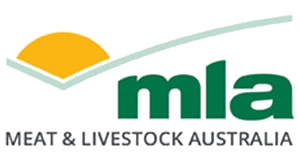Assessment of climate accounting metrics for the Australian red meat industry
Did you know climate metrics can be used to establish an equivalence between different types of GHG emissions?
| Project start date: | 01 December 2020 |
| Project end date: | 30 December 2021 |
| Project status: | Completed |
| Livestock species: | Grain-fed Cattle, Grass-fed Cattle, Sheep, Goat |
| Relevant regions: | National |
|
Download Report
(1.1 MB)
|
|
Summary
The Australian red meat industry is a source of GHG emissions including carbon dioxide, nitrous oxide and methane. These emissions differ in lifetime and greenhouse effect. The combined climate impact can be expressed using a climate metric and most reporting, target-setting and abatement strategy currently uses GWP100. This project investigates the potential of other scientifically valid options that may be more relevant, especially in relation to methane, a relatively short-lived GHG.
Objectives
1. Develop a timeseries of GHG emissions for the Australian red meat industry disaggregated by sector (sheep, cattle), GHG (CO2, CH4, N2O), covering the period 1990 to present (with extrapolation to 2030), and including land use and land use change.
2. Report the industry’s emissions profile using a range of climate accounting approaches: GWP, GTP, GWP*, radiative forcing climate footprint.
3. Identify potential implications of alternative climate metrics with respect to the adoption of a climate neutral target for the industry and mitigation strategies, and make recommendation for future action.
Key findings
The application of different climate metrics led to very different emissions profiles for the Australian red meat industry over time. However, it is important to acknowledge that there is no universally correct way of aggregating a basket of different GHG emissions and reporting the combined climate impact. The impacts differ over time and different climate metrics each offer a perspective.
When emissions of different GHGs are aggregated, the priority should be to select an approach that is relevant to the strategic goal. Regarding the potential adoption of a “climate neutral” target for the industry, it is important to recognize that this term is currently not officially defined. One way of applying the term is in relation to the goal of climate stabilisation.
Benefits to industry
The adoption of a climate neutral target could have important implications for GHG mitigation strategy, as there is no requirement for methane emissions to be reduced to zero or otherwise offset. There could be a need to give greater emphasis to strategies for the mitigation of long-lived GHG emissions (CO2 and N2O). The report also highlights the potential dangers of strategies that seek to mitigate methane emissions but lead to higher CO2 and N2O emissions.
Positively, there is evidence that the sheep meat industry is already climate neutral, and the beef cattle industry is not far away from this goal.
Under the kind of climate neutral strategy described in this report, technologies that reduce methane emissions can create scope for the industry to grow sustainably.
Future research
The report makes six recommendations that relate to:
1. Reviewing the inventory method for production system emissions
2. Pursuing efforts to reduce the uncertainty associated with Land Use, Land Use Change and Forestry (LULUCF) emissions estimates
3. Documenting individual LULUCF emissions
4. Developing a process-based systems model to quantify future emissions
5. Consulting with stakeholders about the formal adoption of a climate neutral strategy
6. Exploring pathways for the formal definition and quantification of “climate neutrality”
More information
| Project manager: | Margaret Jewell |
| Contact email: | reports@mla.com.au |
| Primary researcher: | Commonwealth Scientific & Industria Research Organisation |


